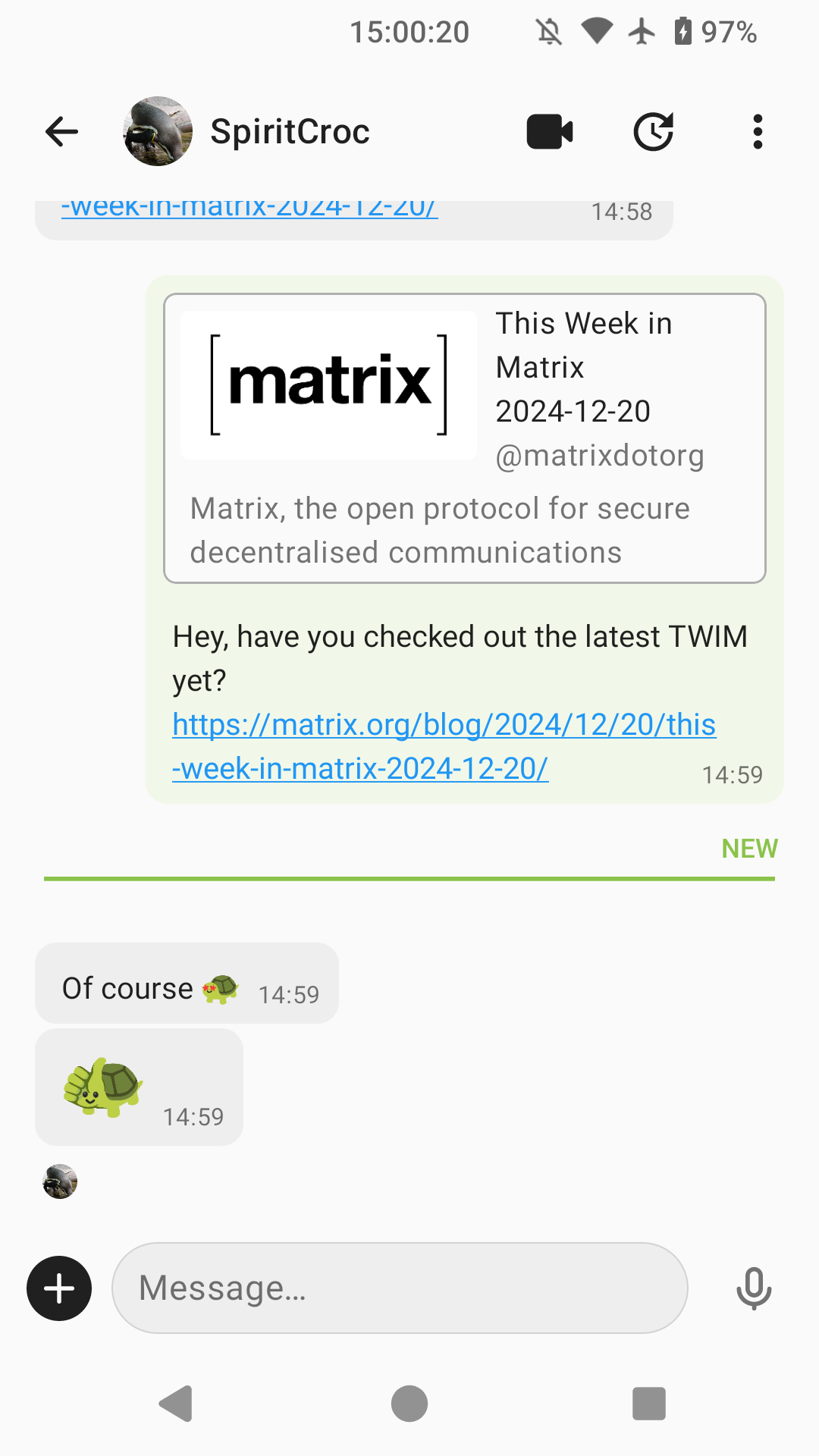This Week in Matrix 2025-02-07
2025-02-07 — This Week in Matrix — Thib (m.org)🔗Matrix Live
🔗Dept of Status of Matrix 🌡️
Quentin Gliech reports
This week we released Matrix Authentication Service 0.13.0!
This is a big release, as we haven't done one since September.
It is fixing a lot of small issues, but here are a few of the big highlights:
- The email verification has been completely reworked, meaning that accounts don't require a valid email address on them anymore! They are still required for open password registrations, but MAS won't nag you anymore to add an email to your account.
- No more spurious logouts when consuming a refresh token! That was a recurring annoyance for people using Element X in poor network conditions.
- It now reliably provisions users to Synapse! Sometimes, MAS would just stop provisioning new sessions if, for some reason, it lost connections to Postgres. This is a thing of the past, as now MAS has a reliable job queue.
- New translations! MAS is now available in Czech, Dutch, Estonian, English, French, German, Portuguese, Simplified Chinese, Swedish, and Ukrainian. If you'd like to help MAS get translated to your language, head out to our Localazy project
- Better support for non-OIDC upstream OAuth 2.0 providers. Support for 'social login' options like Google or Sign-in with Apple went from 'good' to 'great', with many UI improvements.
Upgrading should be as easy as grabbing the latest Docker image or the pre-built binaries, restarting the service and voilà!
Feel free to stop by #matrix-auth:matrix.org to join in on the discussion and if you encounter a bug make sure to report it here.

